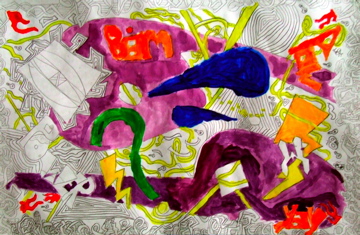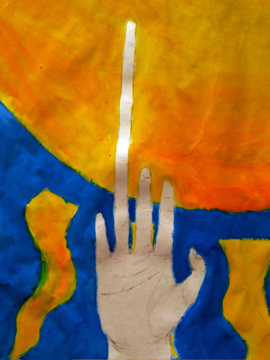Teaching in the arts requires, at one ugly point or another, to have veiled conversations called critiques. They are hideous things that most students from middle school through graduate school would often rather avoid. Visits to the dentist can be more exciting. But as educators we’re often in the position of having to conduct them in order to force students to slow down, pause, reflect, and make decisions about the quality of their work.
In-progress critiques can have a tremendous benefit for both students and the teacher, because instead of discussing work at the end of an assignment or project, the discussion takes place before the work is complete. It gives students a chance to share the direction they’re going instead of the destination and invites suggestions for important next steps.
During a recent in-progress critique, students in my classes looked at some paintings they are creating about power, influenced by Art21 artists Ida Applebroog, Cai Guo-Qiang and Laylah Ali. All of the works—half finished—were hung up. Students seated themselves somewhere close to their painting at the start of class on Monday and I asked them to look at the work for two minutes in silence. What I really asked was for them to look at it until they began to see it. I asked the class as they sat in this bizarre silence (believe me, if you teach, you realize how bizarre and beautiful silence can be in a school setting) to think about the positive aspects of their work so far, but also to focus on next steps in order to create a successful painting based on the criteria we set up. After the silence they shared their thoughts with a partner and by the end of the critique had formed a short, written plan to guide the rest of the process. After taking a look at their plans and adding my own ideas, we made final decisions the next day and jumped back in.
Because creating contemporary art and being inspired by it requires students to meaningfully reflect on the work they see and the work they make, it’s part of our responsibility to construct situations where students can step back from the rhythm of a process and consider possibilities—alone, with classmates, and with their teacher.
In-progress paintings by Nyack High School students Julio Melendez (top) and Heather Bailey (bottom).






Pingback: Teaching with Contemporary Art: The First Three Years | Art21 Blog